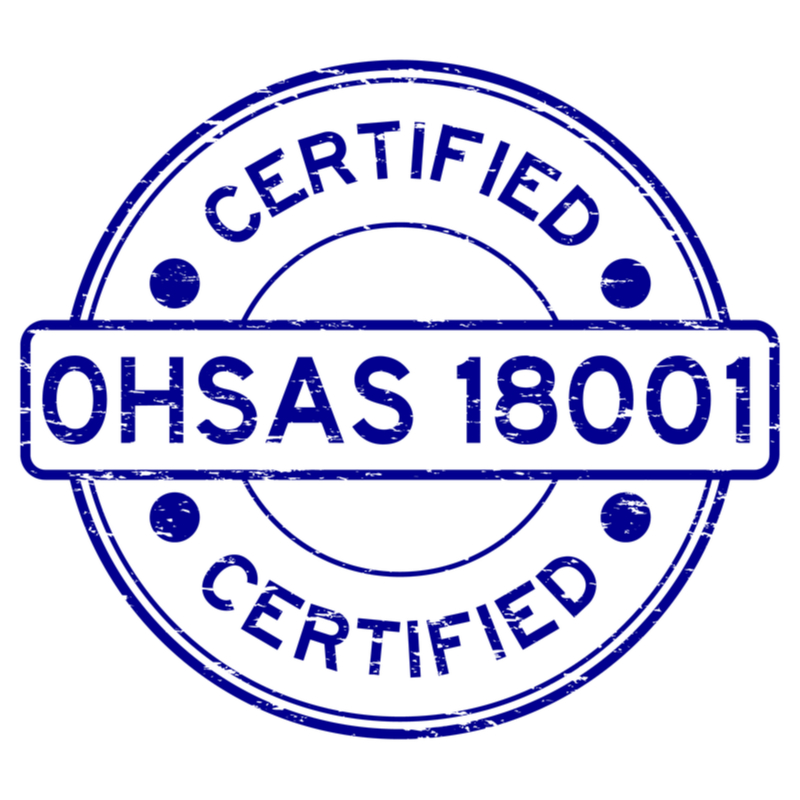The Importance of OHSAS 18001 for Workplace Health and Safety: A Guide for Modern Organizations
Introduction
Occupational Health and Safety Assessment Series (OHSAS) 18001 has been a cornerstone in workplace safety management since its introduction. Developed in 1999 by the British Standards Institution (BSI), OHSAS 18001 provides organizations with a framework to create and maintain a safe, compliant workplace. In today’s fast-paced and highly regulated business environment, safety standards like OHSAS 18001 not only ensure legal compliance but also contribute to a proactive, safety-focused workplace culture.
What is OHSAS 18001?
OHSAS 18001 is an international standard for occupational health and safety management systems (OHSMS). It provides a structured approach for organizations to identify, assess, and control health and safety risks in the workplace. While ISO standards such as ISO 45001 have been developed to succeed OHSAS 18001, many organizations worldwide still find value in the original framework as it outlines practical, actionable steps for effective risk management and regulatory compliance.
Key Components of OHSAS 18001
OHSAS 18001 focuses on risk identification, control, and ongoing improvement in workplace safety. Key components of the OHSAS 18001 framework include:
- Policy Development – Establishing an occupational health and safety policy that is aligned with organizational objectives and regulatory requirements.
- Hazard Identification and Risk Assessment – Proactively identifying hazards and evaluating potential risks to implement preventive measures.
- Objectives and Programs – Setting measurable safety objectives and developing programs to achieve them, such as training sessions or equipment upgrades.
- Implementation and Operation – Applying the system to the organization’s daily operations, including clear roles, responsibilities, and necessary training.
- Monitoring and Measurement – Tracking safety performance through audits, inspections, and regular monitoring to ensure compliance and improve system effectiveness.
- Management Review and Continuous Improvement – A recurring cycle where management reviews safety performance and identifies areas for continuous improvement.
OHSAS 18001 vs. ISO 45001: Key Differences
ISO 45001, introduced in 2018, was designed to replace OHSAS 18001, with several updates reflecting modern approaches to safety management. While OHSAS 18001 focuses on hazard control, ISO 45001 emphasizes a more comprehensive, proactive approach that includes leadership involvement and risk-based thinking. The Importance of OHSAS 18001
The differences include:
- Risk and Opportunity Management: ISO 45001 goes beyond hazard control to integrate a risk and opportunity framework, making safety management part of the organization’s overall strategy.
- Leadership and Worker Involvement: ISO 45001 calls for greater leadership involvement and mandates the participation of all levels of employees in health and safety management.
- Systematic Alignment with Other Standards: ISO 45001 aligns more closely with other ISO standards, allowing organizations to more easily integrate it with standards like ISO 9001 (Quality) and ISO 14001 (Environment).
Benefits of Implementing OHSAS 18001
Even as organizations transition to ISO 45001, the principles of OHSAS 18001 remain valuable in fostering a safety-first mindset. Key benefits include:
- Improved Safety Performance: By identifying risks early and implementing preventive measures, organizations reduce the likelihood of accidents and injuries.
- Enhanced Reputation: Demonstrating a commitment to employee well-being boosts organizational credibility, attracting top talent and building customer trust.
- Cost Savings: Effective safety management reduces costs related to workplace accidents, such as medical expenses, insurance premiums, and potential legal fees.
- Legal Compliance: Compliance with local and international safety regulations mitigates the risk of fines and penalties.
Steps for Transitioning to ISO 45001
For organizations currently certified under OHSAS 18001, transitioning to ISO 45001 can be straightforward if they already have a robust OHSMS in place. Recommended steps include:
- Gap Analysis: Assess differences between OHSAS 18001 and ISO 45001, identifying areas that require additional focus, such as worker participation.
- Leadership Training: Ensure senior leaders understand the new standard’s requirements and the importance of their role in health and safety management.
- System Updates: Update policies and processes to incorporate ISO 45001’s requirements for proactive risk management and continuous improvement.
- Employee Engagement: Educate employees about the transition, emphasizing the benefits of the new standard and promoting a culture of safety at all levels.
- Certification Process: Work with a recognized certification body to complete the ISO 45001 certification process and validate compliance with the updated standard.
Conclusion
OHSAS 18001 has laid a strong foundation for occupational health and safety management, helping organizations foster safer workplaces and reduce risks. Although ISO 45001 has introduced an updated standard, many organizations still benefit from the principles established by OHSAS 18001. As organizations move forward, combining the strengths of OHSAS 18001 with the innovations of ISO 45001 will enhance workplace safety, protect employees, and promote sustainable success in a competitive business environment. The Importance of OHSAS 18001











